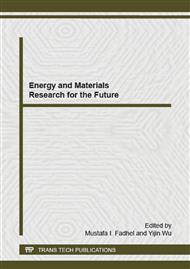p.50
p.55
p.63
p.69
p.75
p.79
p.84
p.93
p.96
Effect of Potential on Stress Corrosion Cracking of 321 Stainless Steel under Marine Environment
Abstract:
Slow strain rate test (SSRT) applied with different potential was adopted to investigate the stress corrosion cracking (SCC) sensibility of stainless steel under marine environment. The fracture morphology of 321 stainless steel SCC specimens were analyzed with the aid of SEM. The strain-stress results showed that 321 stainless steel exhibited less SCC sensitivity when anodic potential or cathodic potential were applied on the specimen, both fracture elongation and fracture time ascended compared with that of corrosion potential. The fractography analysis results also proved this susceptibility clearly.
Info:
Periodical:
Pages:
75-78
Citation:
Online since:
February 2015
Authors:
Price:
Сopyright:
© 2015 Trans Tech Publications Ltd. All Rights Reserved
Share:
Citation:


